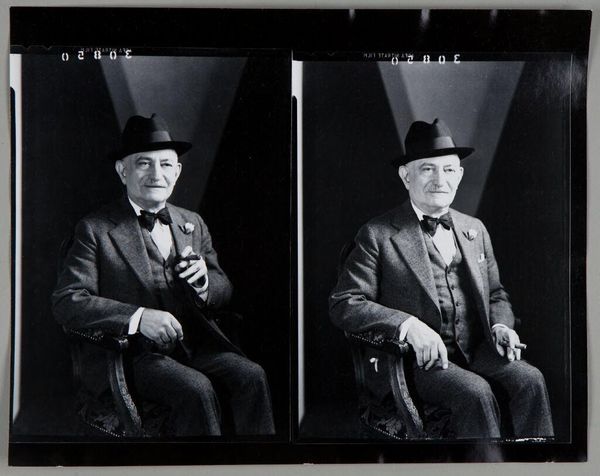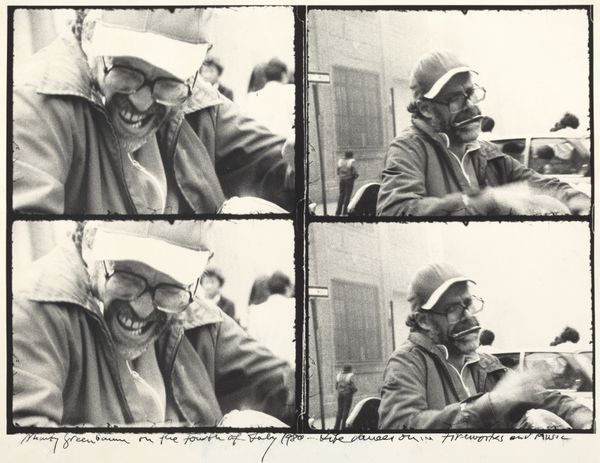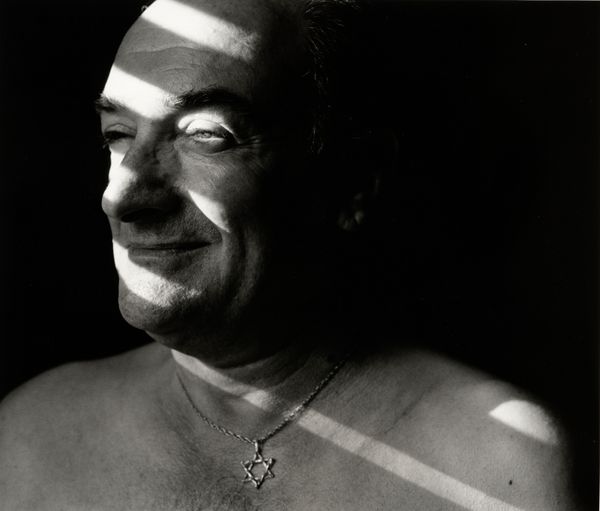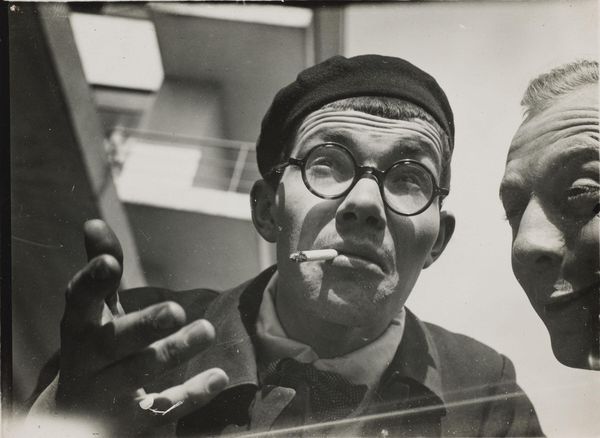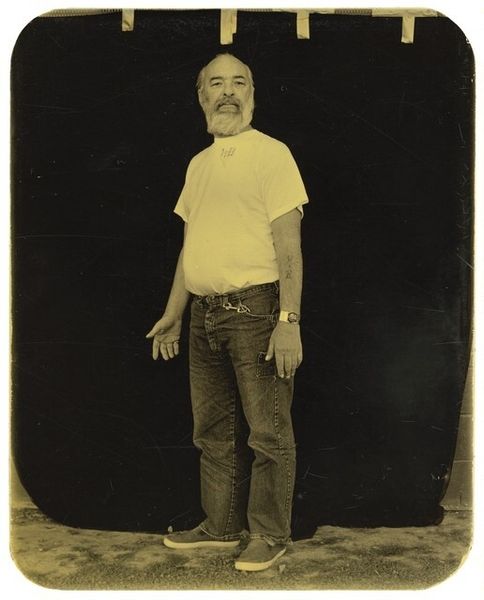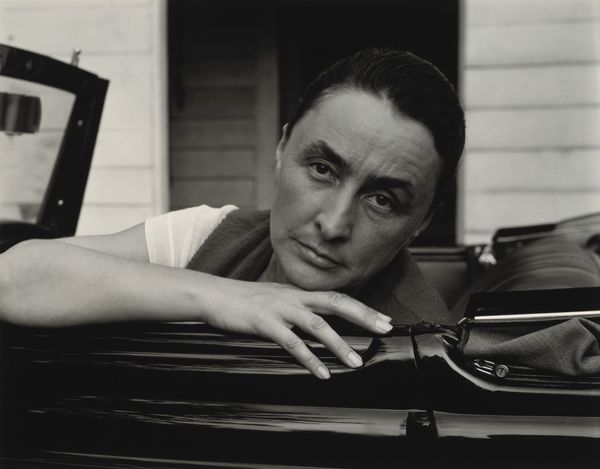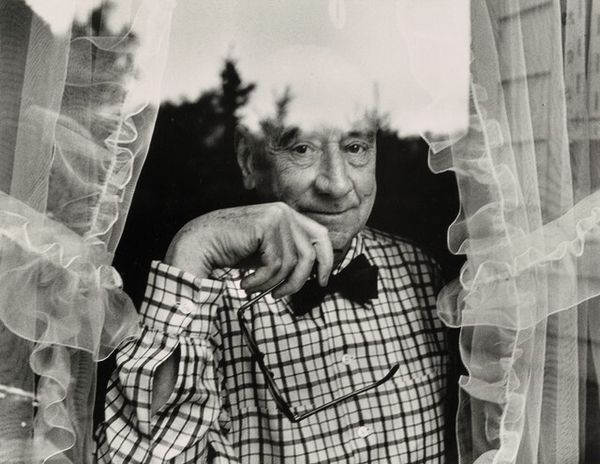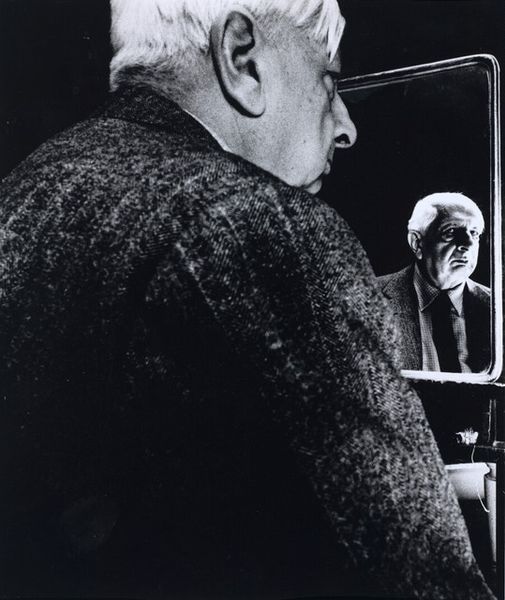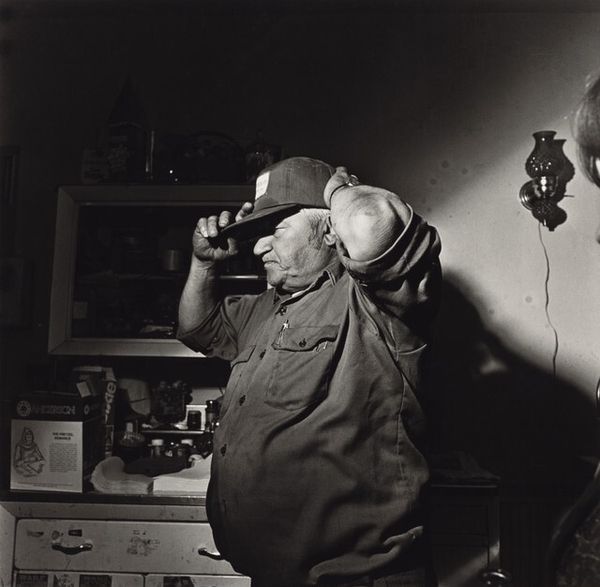
photography, gelatin-silver-print
#
portrait
#
postmodernism
#
street-photography
#
photography
#
gelatin-silver-print
Dimensions: sheet: 27.9 x 35.3 cm (11 x 13 7/8 in.)
Copyright: National Gallery of Art: CC0 1.0
Curator: This compelling gelatin silver print is "Billy, Life Dances On..." by Robert Frank, circa 1980. What catches your eye about this work? Editor: Initially, there's a raw vulnerability. The composition, split into four distinct shots—two in what looks like a drab hallway, two up close—feels like fragmented glimpses into a life. There's something immediate, unflinching about it. Curator: Frank's photographs are celebrated for their candid nature and their ability to reflect on the outsider. The divided layout mimics film strips, underscoring this subject’s, Billy’s, own life, replayed. Do you feel Frank treats his subject with dignity? Editor: I think Frank attempts an intimacy, yet the voyeuristic aspect is undeniable. Billy is centered, but he's also captured in a moment that may not be entirely his own choosing. The handwritten inscription at the bottom hints at something more, “Please use Quote from Films; you shouldn’t have done thus, Ive shown you my innermost thoughts.” It asks questions about how artists portray vulnerable subjects. Curator: The writing adds a poignant dimension. Billy's allowing Frank access, exposing intimate thoughts for perhaps some artistic merit, as Frank was looking for truth. I can understand reading a risk into these terms, though; certainly documentary can easily slip from visibility into exploitation. Editor: Precisely. How often do marginalized individuals truly control their own narratives within art? We must consider this tension. The cigarette seems almost defiant in his mouth in one image, a casual gesture of reclaiming something as his own. In the portraits the face seems less guarded and defiant than simply sad. Curator: Yes, the cigarette in the corridor sequence could be a small emblem of agency against the more raw vulnerability portrayed in the portrait framing. It also adds to the visual symbolism – is this a momentary prop to convey something of him or is it his habitual attribute that would reveal this man across any situation. Editor: In a culture that romanticizes and often consumes such narratives, it prompts critical self-reflection. There's something vital in seeing past stereotypes and honoring individuals beyond our initial, often biased, perceptions. Curator: Ultimately, this photograph becomes an invitation to wrestle with complex layers of reality. Perhaps one reading can only conclude when more of those perspectives of those observed have their say.
Comments
No comments
Be the first to comment and join the conversation on the ultimate creative platform.
